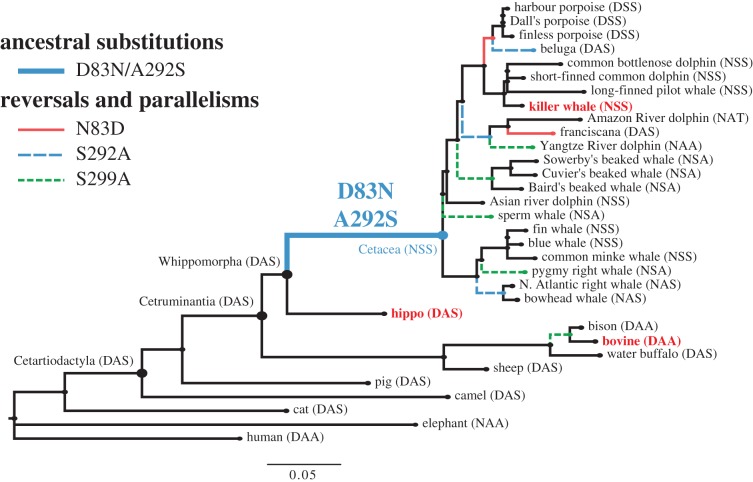Figure 3.
Cetartiodactyl species tree showing substitutions at rhodopsin sites 83, 292 and 299, as derived from ancestral sequence reconstruction using codon-based random sites models. The ancestral cetacean branch representing the transition from terrestrial to aquatic ancestors is characterized by a double D83N/A292S mutation, resulting in the N83/S292/S299 identity that persists in living delphinids such as the killer whale. Relative to other mammals, cetaceans have evolved a surprisingly diverse number of amino acid combinations at these three sites, including reversals to terrestrial residues.

